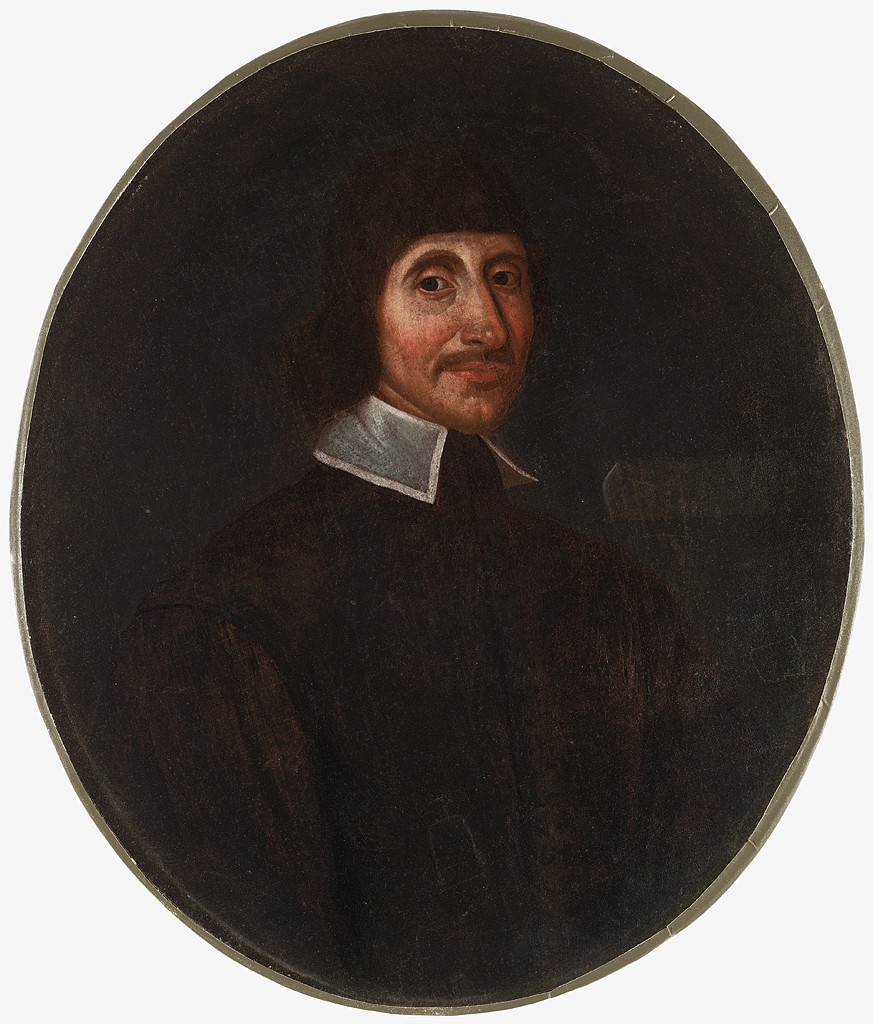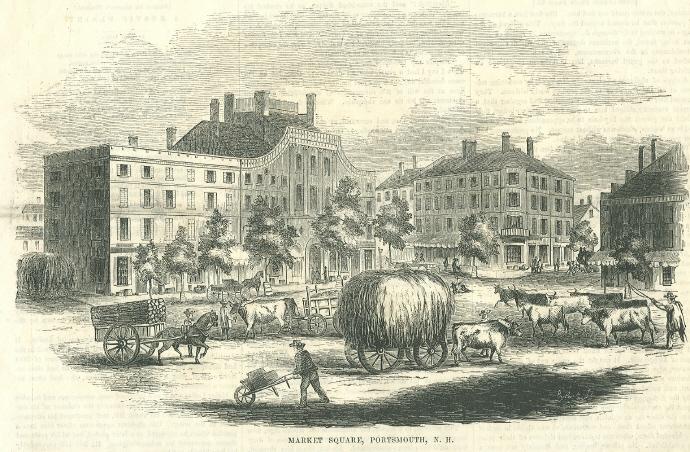|
Blessing Of The Bay
''Blessing of the Bay'' was the second oceangoing, non-fishing vessel built in what is now the United States, preceded only by the ''Virginia'', in 1607. Construction The ''Blessing of the Bay'' was a thirty-ton barque or a pinnace, built largely of locust tree wood. According to John R. Spears, ''Blessing of the Bay'' was not a bark except as the term was used to designate any sailing vessel at the time. He also stated that she had one mast. William H. Clark calls the ''Blessing of the Bay'' "primarily a trading vessel, but armed and designed to fight." He also stated, "she was high-bowed with one mast." The ship was built for John Winthrop at Mistick (now Medford, Massachusetts), by Robert Molton and other shipwrights sent to New England in 1629 by the Massachusetts Bay Company, and was launched July 4, 1631 under the command of Anthony Dike. Coastal voyages to New Amsterdam ''Blessing of the Bay'' was built "for the use of the Massachusetts Colony at the insistence of Gove ... [...More Info...] [...Related Items...] OR: [Wikipedia] [Google] [Baidu] |
John Winthrop
John Winthrop (January 12, 1587/88 – March 26, 1649) was an English Puritan lawyer and one of the leading figures in founding the Massachusetts Bay Colony, the second major settlement in New England following Plymouth Colony. Winthrop led the first large wave of colonists from England in 1630 and served as governor for 12 of the colony's first 20 years. His writings and vision of the colony as a Puritan " city upon a hill" dominated New England colonial development, influencing the governments and religions of neighboring colonies. Winthrop was born into a wealthy land-owning and merchant family. He trained in the law and became Lord of the Manor at Groton in Suffolk. He was not involved in founding the Massachusetts Bay Company in 1628, but he became involved in 1629 when anti-Puritan King Charles I began a crackdown on Nonconformist religious thought. In October 1629, he was elected governor of the Massachusetts Bay Colony, and he led a group of colonists to the New Worl ... [...More Info...] [...Related Items...] OR: [Wikipedia] [Google] [Baidu] |
Clapboard (architecture)
Clapboard (), also called bevel siding, lap siding, and weatherboard, with regional variation in the definition of these terms, is wooden siding of a building in the form of horizontal boards, often overlapping. ''Clapboard'' in modern American usage is a word for long, thin boards used to cover walls and (formerly) roofs of buildings. Historically, it has also been called ''clawboard'' and ''cloboard''. In the United Kingdom, Australia and New Zealand, the term ''weatherboard'' is always used. An older meaning of "clapboard" is small split pieces of oak imported from Germany for use as barrel staves, and the name is a partial translation (from , "to fit") of Middle Dutch and related to German . Types Riven Clapboards were originally riven radially producing triangular or "feather-edged" sections, attached thin side up and overlapped thick over thin to shed water. [...More Info...] [...Related Items...] OR: [Wikipedia] [Google] [Baidu] |
Ships Built In Medford, Massachusetts
A ship is a large watercraft that travels the world's oceans and other sufficiently deep waterways, carrying cargo or passengers, or in support of specialized missions, such as defense, research, and fishing. Ships are generally distinguished from boats, based on size, shape, load capacity, and purpose. Ships have supported exploration, trade, warfare, migration, colonization, and science. After the 15th century, new crops that had come from and to the Americas via the European seafarers significantly contributed to world population growth. Ship transport is responsible for the largest portion of world commerce. The word ''ship'' has meant, depending on the era and the context, either just a large vessel or specifically a ship-rigged sailing ship with three or more masts, each of which is square-rigged. As of 2016, there were more than 49,000 merchant ships, totaling almost 1.8 billion dead weight tons. Of these 28% were oil tankers, 43% were bulk carriers, and 13% were con ... [...More Info...] [...Related Items...] OR: [Wikipedia] [Google] [Baidu] |
Age Of Sail Merchant Ships Of England
Age or AGE may refer to: Time and its effects * Age, the amount of time someone or something has been alive or has existed ** East Asian age reckoning, an Asian system of marking age starting at 1 * Ageing or aging, the process of becoming older ** Senescence, the gradual deterioration of biological function with age ** Human development (biology) * Periodization, the process of categorizing the past into discrete named blocks of time ** Ages of Man, the stages of human existence on the Earth according to Greek mythology and its subsequent Roman interpretation **Prehistoric age Places * AGE, the IATA airport code for Wangerooge Airfield, in Lower Saxony, Germany People * Åge, a given name * Aage, a given name * Agenore Incrocci, an Italian screenwriter Arts, entertainment, and media Fictional entities * ''Ages'', worlds in the ''Myst'' video game series Music * "Age" (song), a song by Jim and Ingrid Croce Periodicals * ''Age'' (journal), a scientific journal on ageing, now ... [...More Info...] [...Related Items...] OR: [Wikipedia] [Google] [Baidu] |
Age Of Sail Merchant Ships Of The United States
Age or AGE may refer to: Time and its effects * Age, the amount of time someone or something has been alive or has existed ** East Asian age reckoning, an Asian system of marking age starting at 1 * Ageing or aging, the process of becoming older ** Senescence, the gradual deterioration of biological function with age ** Human development (biology) * Periodization, the process of categorizing the past into discrete named blocks of time ** Ages of Man, the stages of human existence on the Earth according to Greek mythology and its subsequent Roman interpretation **Prehistoric age Places * AGE, the IATA airport code for Wangerooge Airfield, in Lower Saxony, Germany People * Åge, a given name * Aage, a given name * Agenore Incrocci, an Italian screenwriter Arts, entertainment, and media Fictional entities * ''Ages'', worlds in the ''Myst'' video game series Music * "Age" (song), a song by Jim and Ingrid Croce Periodicals * ''Age'' (journal), a scientific journal on ageing, now ... [...More Info...] [...Related Items...] OR: [Wikipedia] [Google] [Baidu] |
Barques
A barque, barc, or bark is a type of sailing vessel with three or more masts having the fore- and mainmasts rigged square and only the mizzen (the aftmost mast) rigged fore and aft. Sometimes, the mizzen is only partly fore-and-aft rigged, bearing a square-rigged sail above. Etymology The word "barque" entered English via the French term, which in turn came from the Latin ''barca'' by way of Occitan, Catalan, Spanish, or Italian. The Latin ''barca'' may stem from Celtic ''barc'' (per Thurneysen) or Greek ''baris'' (per Diez), a term for an Egyptian boat. The ''Oxford English Dictionary'', however, considers the latter improbable. The word ''barc'' appears to have come from Celtic languages. The form adopted by English, perhaps from Irish, was "bark", while that adopted by Latin as ''barca'' very early, which gave rise to the French ''barge'' and ''barque''. In Latin, Spanish, and Italian, the term ''barca'' refers to a small boat, not a full-sized ship. French influenc ... [...More Info...] [...Related Items...] OR: [Wikipedia] [Google] [Baidu] |
Dixie Bull
Dixie Bull (or Dixey Bull) was an English sea captain, and the first pirate known to prey on shipping off the New England coast, especially Maine. Biography Born in Huntingdon about 1611, he was apprenticed Skinner to his elder brother Seth in 1627 for a period of 9 years, but did not complete his indentures until 1648 when he was granted freedom of the city of London in the Worshipful Company of Skinners. He came to Boston in 1632 having been granted a patent of land and started sailing the Maine coast with a small vessel, trading with the Indians, largely for furs, especially beaver. The Skinners were the livery company whose business was the trade in skins and furs, so he may have been acting as agent for his brother in London. In 1632, traveling in the Penobscot Bay area, he was attacked by a roving band of French in a small pinnace; or possibly he was present in Castine Harbor when a French force attacked the trading post there. Whatever the details, his ship was captured a ... [...More Info...] [...Related Items...] OR: [Wikipedia] [Google] [Baidu] |
Portsmouth, New Hampshire
Portsmouth is a city in Rockingham County, New Hampshire, United States. At the 2020 census it had a population of 21,956. A historic seaport and popular summer tourist destination on the Piscataqua River bordering the state of Maine, Portsmouth was formerly the home of the Strategic Air Command's Pease Air Force Base, since converted to Portsmouth International Airport at Pease. History American Indians of the Abenaki and other Algonquian languages-speaking nations, and their predecessors, inhabited the territory of coastal New Hampshire for thousands of years before European contact. The first known European to explore and write about the area was Martin Pring in 1603. The Piscataqua River is a tidal estuary with a swift current, but forms a good natural harbor. The west bank of the harbor was settled by European colonists in 1630 and named Strawbery Banke, after the many wild strawberries growing there. The village was protected by Fort William and Mary on what is now ... [...More Info...] [...Related Items...] OR: [Wikipedia] [Google] [Baidu] |
Maple Sugar
Maple sugar is a traditional sweetener in Canada and the northeastern United States, prepared from the sap of the maple tree ("maple sap"). Sources Three species of maple trees in the genus '' Acer'' are predominantly used to produce maple sugar: the sugar maple (''A. saccharum''), the black maple (''A. nigrum''), and the red maple (''A. rubrum''), because of the high sugar content (roughly two to five percent) in the sap of these species. The black maple is included as a subspecies or variety in a more broadly viewed concept of ''A. saccharum'', the sugar maple, by some botanists. Of these, the red maple has a shorter season because it buds earlier than sugar and black maples, which alters the flavor of the sap. A few other species of maple are also sometimes used as sources of sap for producing maple sugar, including the box elder (or Manitoba maple, ''A. negundo''), the silver maple (''A. saccharinum''), and the bigleaf maple (''A. macrophyllum''). Similar sugars may al ... [...More Info...] [...Related Items...] OR: [Wikipedia] [Google] [Baidu] |




